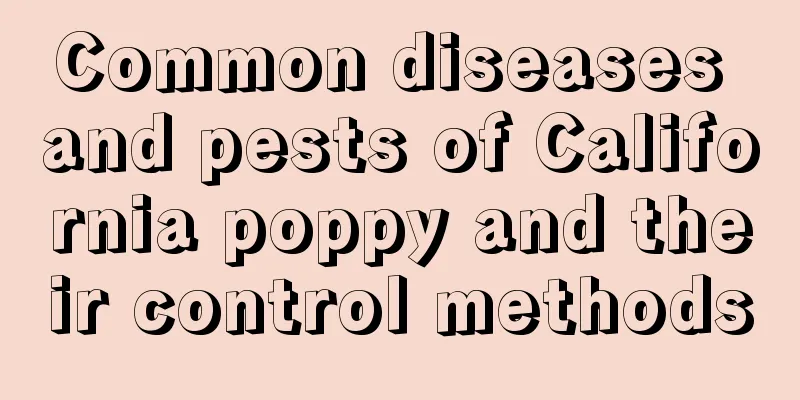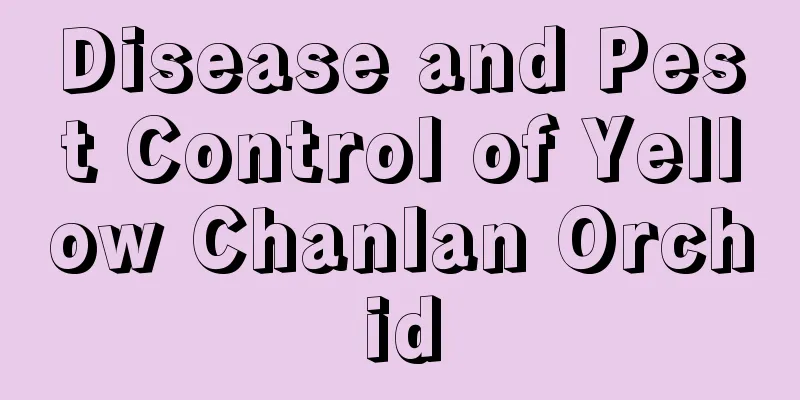Common diseases and pests of California poppy and their control methods

Common diseases of California poppy: black rotSymptoms of California poplar black rotMainly damages leaves. The lesions gradually spread from the lower leaves to the upper leaves. Part of the leaf surface turns yellow, and grayish-white spots with unclear outlines appear on the back, densely covered with grayish-white mold. Soon after, a layer of mold also forms on the leaf surface, and finally the leaves curl and dry up, resulting in poor fruit set, poor fruit growth, and early coloring. The roots of California poppies are fleshy. After black rot occurs, they may rot from the roots, and the stems will also show signs of black rot. The main reason is that California poppy is afraid of waterlogging. If the weather is rainy for a long time, the california will suffer. Spring in the south and June to July in the Pearl River Delta are the peak seasons for black rot of California poppies. Black rot control methods of California poplarThe rhizomes of plants that are wilting or have serious root diseases should be cut off in time, and the diseased holes should be sterilized. Control water in time and keep the soil in the pot dry. You can use 500 to 600 times diluted carbendazim to fill the pots. When irrigating, make sure to fully irrigate the plant's roots. Common pests of California poppies: WhitefliesPest symptomsWhiteflies have a very diverse diet and can harm a variety of vegetables, succulents and herbaceous plants. The main pests are nymphs, which concentrate on sucking sap from the back of California poplar leaves, causing the leaves to fade, turn yellow, and wilt. In severe cases, the plant may die. When it causes damage, it also secretes honey dew, which contaminates the leaves, causes fungal infection, affects the photosynthesis of the plant, and seriously affects flowering and fruit setting. Prevention and treatment methodsOld nymphs are mostly found on the lower leaves. Remove the old leaves and burn them. You can use 25% thiamethoxam (buprofezin) wettable powder or 2.5% cypermethrin or 20% cypermethrin (sulfuron) emulsifiable concentrate at a concentration of 2000 times for spraying once every 6 to 7 days for three consecutive times. You can also use smoke spray for fumigation 2-3 times in a row. |
<<: Common diseases of white clover and their control methods
>>: Diseases and prevention methods of Albizia Julibrissin
Recommend
Difference between gladiolus and calamus
1. Differences in plant types The corm of gladiol...
Is tiger thorn flower poisonous?
1. Is it poisonous? Although its flowers are very...
Can foot washing water be used to water flowers? What flowers are suitable for watering?
Can foot washing water be used to water flowers? ...
What's wrong with the green radish wilting? (soil and hydroponics)
1. Reasons for soil culture to wilt 1. Lack of wa...
How to prune apple trees
When to prune apple trees Apple trees undergo fou...
8 recipes for making your own water-soluble fertilizer
Water-soluble fertilizer is a common fertilizer i...
How to care for Sedum
1. Soil When growing Sedum, you need to use loose...
Don’t throw away the leftover “fruit peels”, use them as flower fertilizer to make your flowers bloom one after another!
Kalanchoe is actually very easy to grow, but many...
Are tulips appropriate for Christmas?
1. Is it appropriate to give tulips as gifts at C...
How to mix planting soil and how to mix planting soil
Planting soil preparation requirements Planting s...
Diseases and insect pests of Duzhanchun and their control methods
Diseases of Duzhanchun and their control Scleroti...
What are the benefits of dandelions
1. Clear away heat and detoxify Dandelion is cold...
What should I do if rose seedlings become stunted?
Rose seedlings become stiff during transplanting ...
How long does it take for Daphne koreana to adapt to the pot?
Daphne odora acclimatization time Generally speak...
How often should I water the big lucky tree?
How often should I water the big lucky tree? The ...









